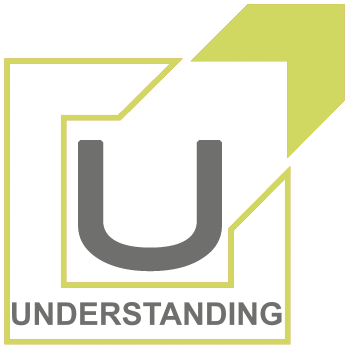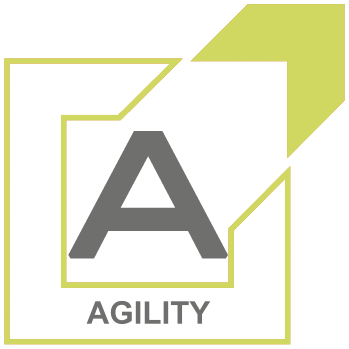Video: Do you like VUCA?
What does VUCA thinking mean for your LEADERSHIP, STRATEGIES, PROCESSES and CULTURE?
VUCA - Vision Understanding Clarity Agility
VUCA thinking is a way of recognizing and understanding the complexities and dynamics of a rapidly changing world. It stands for Volatility, Uncertainty, Complexity, and Ambiguity and it is used to help teams and organizations to be better prepared for uncertain situations and to manage the risks associated with them.
VUCA thinking involves developing the ability to anticipate and adapt to changes quickly, to think strategically, and to develop creative solutions.

CRYSTALISE YOUR FUTURE & PURPOSE

IDENTIFY OPPORTUNITIES AND GAIN COMPETITIVE ADVANTAGES

AVOIDS CONFUSION AND BUILD BETTER RELATIONSHIPS

REACT AND RESPOND EFFECTIVELY TO THREATS
What does VUCA thinking mean for your LEADERSHIP and STRATEGIES?
VUCA Positive
VUCA thinking is a way of recognizing and understanding the complexities and dynamics of a rapidly changing world. It stands for Volatility, Uncertainty, Complexity, and Ambiguity and it is used to help teams and organizations to be better prepared for uncertain situations and to manage the risks associated with them.
VUCA thinking involves developing the ability to anticipate and adapt to changes quickly, to think strategically, and to develop creative solutions.
It also encourages leaders to think beyond the boundaries of their own organization and to consider the broader context in which their decisions are made.

CRYSTALISE YOUR FUTURE & PURPOSE
Paint a picture of the future you want. Together; as a compass and for orientation; in order to confer meaning and spark motivation – and to forge internal and external identity and effectiveness.

IDENTIFY OPPORTUNITIES AND GAIN COMPETITIVE ADVANTAGES
Understand interconnections; make them transparent. Reflect on the context. Think and plan meta-strategically. Start from the result and work backwards. Harmonise skills. Embrace and exploit behaviours and reactions. Convert anxiety and resistance into productive energy.

AVOIDS CONFUSION AND BUILD BETTER RELATIONSHIPS
Simplicity. Focus on what counts and what it's really about. Trust, transparent connections and processes. Apply energy and force exactly where they will be most effective.

REACT AND RESPOND EFFECTIVELY TO THREATS
Flexibility. Agility. Scrutinise hierarchical management techniques. Promote a consistent culture for making decisions and accounting for failures. Interact transparently with objections. Facilitate innovation and build up resilience.
"VUCA is more than a buzzword! It is a way of thinking and approaching solutions
to the problems of our digital and dynamic world."
VUCA is more than a buzzword! It is a way of thinking and approaching solutions to the problems of our digital and dynamic world.
Best practice was yesterday
Best thinking is in demand today and tomorrow
VUCA, BANI and RUPT: In this time of multiple crises, there is a need for any kind of translation and creation that provides orientation and allows organisations and management to do more of what is appropriate!
The terms VUCA, BANI and RUPT and the concepts behind them are used to describe the challenges and dynamics that organisations and societies face in a world characterised by uncertainty and constant change. Organisations that are aware of this reality can be better prepared to adapt and operate successfully in a complex environment.
It would be wrong and unwise to send these concepts and ideas into competition with each other. Rather, it is more valuable to think about the respective statements and positions together and to understand them as further support for a world that is moving forwards and no longer signifies an “exception to a rule”. That would be very naive and more wishful thinking than realism.
- If VUCA helps to grasp the phenomena of volatility, uncertainty, complexity and ambiguity and relate them to one’s own context, BANI helps to better understand and locate their effects and what they do to individuals and organisations. RUPT makes it clear that organisations can be confronted with profound, non-linear changes that appear paradoxical and are difficult to predict.
Overall, these concepts have in common that they point to the uncertainty, complexity and dynamics of world events. Organisations and managers must be aware that traditional approaches are no longer sufficient to be successful and stable under such conditions. Flexibility and adaptability are more important than ever.
VUCA Vision Understanding Clarity Agility
Whereas the heroic manager of the past knew all, could do all, and could solve every problem, the postheroic manager asks how every problem can be solved in a way that develops other people´s capacity to handle it.
Photo by Liz Handy
Whereas the heroic manager of the past knew all, could do all, and could solve every problem, the postheroic manager asks how every problem can be solved in a way that develops other people´s capacity to handle it.
Deciding and connecting are success factors for shaping the future!
People are generally willing to achieve great things and go the much-vaunted “extra mile” when necessary. They are open to new ideas and participate if the purpose and benefits are clear. This requires the right framework conditions such as confidence, trust, psychological security and practical implementation options that enable experiences, skills and preferences to be transformed into performance and results. This is all the more true under the conditions of multi-crises and the necessity of digitalisation, which can no longer be ignored.
The human-centred design approach is gaining in importance for good reason. After all, the most effective form of corporate development is one that can be actively and autonomously co-designed by those involved. In a digitalised world, it is all about thinking ahead to the future and strengthening cooperation within the company with contemporary solutions.
As a manager, you play a key role in determining the framework conditions that enable your organisation to operate. The increase in volatility, uncertainty, complexity and ambiguity requires you and your company to realign yourselves and ensure the right results with new leadership behaviour under changed conditions.
Dealing with multi-crises requires you to find your own way, to understand the psycho-logic and system logic when it comes to working with and among people, and to develop empathetic behaviour. In short: to engage more with people and their needs in order to develop and derive effective strategies together with them.
People determine the success of every company, but they need the right framework conditions!
Cartoon of the Month

 VUCA-WORLD
VUCA-WORLD



